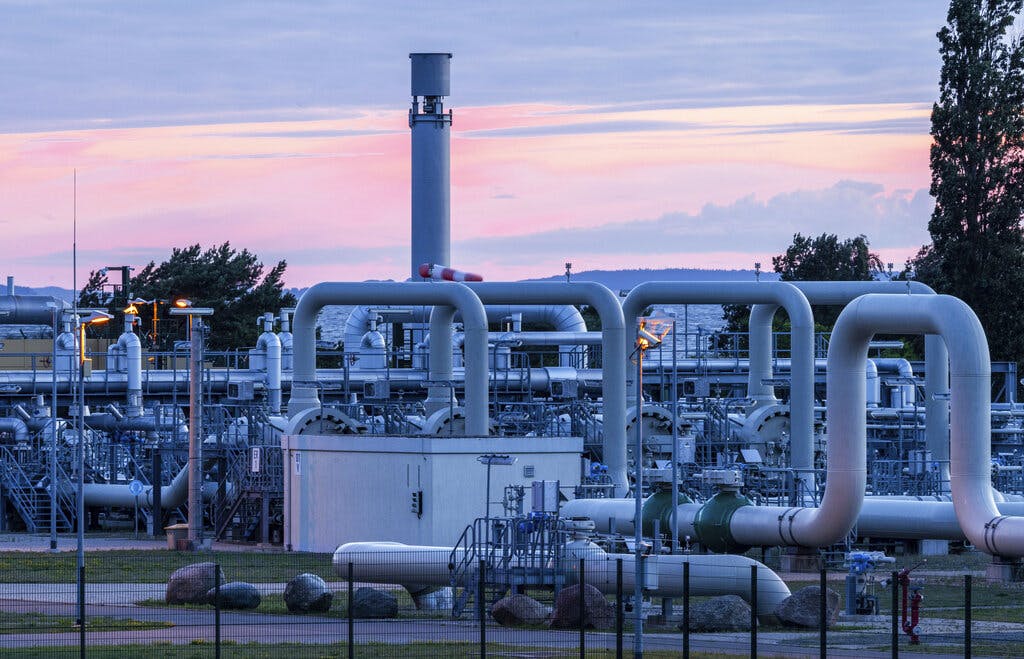New York Took the Wrong Exit on the Road to Clean Energy
If leaders like Governor Hochul truly wanted to fight climate change, instead of just sounding like it, they’d focus on the bigger picture instead of the talking points.

This week, the city councils of Washington, D.C. and San Diego voted unanimously to ban natural gas in newly constructed buildings in attempts to bolster their net-zero goals. It’s part of a hot new trend in climate theater — banning natural gas while ignoring our need for reliable clean energy.
Now Governor Hochul is expected to add the policy to her upcoming budget proposal, taking notes from New York City, which banned the fuel source late last year. The proposals are full of sound, fury, and climate promises but avoid a truth — that the new buildings will still run on fossil fuels absent investments in nuclear energy.
Weaning our electrical grids off fossil fuels like natural gas is an important step toward reducing the carbon emissions that contribute to climate change. Natural gas combustion alone constitutes a third of American emissions, with methane leaks from production and transport worsening the impact.
As over 40 percent of American emissions come from buildings, it seems logical to start there. Yet banning natural gas in new construction is unlikely to move the emissions needle for New York, and San Diego’s plan to retrofit buildings is being called “…a massive undertaking for which there is little precedent.”
Banning natural gas in 2022 puts the cart before the horse. Electrification — moving buildings away from natural gas and fully onto the electric grid — allows greater flexibility to diversify how that electricity can be generated beyond just natural gas. This can be nuclear, hydro, wind, solar, or other forms of emissions-reducing clean energy.
For states like California and New York that are already hostile toward nuclear energy, bans without reliable clean energy substitutes just increase fossil fuel usage. The plurality of New York’s electricity is generated by the very fossil fuels it claims to want to replace.
Electricity generated by fossil fuel accounts for more of the state grid’s power than hydro, nuclear, and wind combined. Although wind remains a favorite alternative for opponents of nuclear energy, it accounts for less than 4 percent of electricity. This is in part because the limitations of turbines’ energy outputs makes it difficult for power from wind farms to reach more populous areas, limiting the degree to which states can rely on it as a source of power.
New York’s reliance on natural gas, and other fossil fuels, spiked after the loss of one of its largest sources of nuclear power. The closure of the Indian Point Nuclear Plant, which had powered a quarter of New York City’s grid for nearly 60 years, was hard-fought by nuclear advocates against metropolitan NIMBYs, including Governor Cuomo. It has been called “one of the greatest strategic blunders in the history of energy in New York” and “a catastrophically wrong decision.”
California has since been prompted to think twice about its decision to fully wipe out its nuclear energy plants, with Governor Newsom proposing a plan to keep the plant operational.
Centralization comes at a price, and using mandates instead of market incentives is bad policy for both consumers and the climate. With energy prices rising, shutting down cheaper – and cleaner – heating sources just doesn’t make sense.
If the energy crisis in Europe offers any lessons, it’s that sloppy policies, to include mandating away from specific fuel sources, can leave energy markets desperate, ultimately driving them to more expensive and dirtier sources. Mandating something doesn’t necessarily give you the outcome you want. Yet without reliable clean energy, power grids are left with no choice but to throw climate under the bus.
Europe’s recent energy crisis also illustrates what happens when governments reject their nuclear energy options, leaving countries willing to burn anything to keep their citizens warm — wiping out years of emissions reductions in the process. Similarly, if New York’s grid can’t source enough natural gas, its generators will switch to burning oil — hardly a win for the environment.
If leaders like Ms. Hochul truly wanted to fight climate change, instead of just sounding like it, they’d focus on the bigger picture instead of the talking points. Hiding fossil fuel usage behind a power grid, narrowly defining progress, and tinkering with households’ energy supplies isn’t progress for the economy or the climate. Instead, our path involves an uncomfortable truth — we need a U-turn in favor of nuclear energy.

